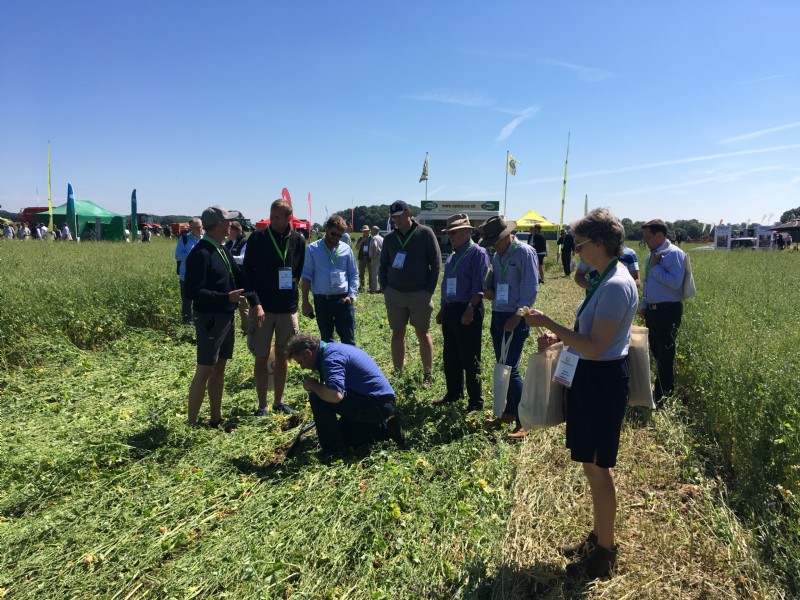

Ian will be presenting a fresh perspective on herbal leys in the Soil Tent on 27th June at 12.30pm. This article is featured in the Groundswell Showguide...
Herbal Leys - Good for the Soil and Good for Farmers
Farmers who use herbal leys as part of a crop rotation spend less on inputs thanks to the improvements they make to the soil and this in turn makes the farm more profitable.
When farm payments and subsidies are increasingly dependant on ‘good environmental practice’, growing a diverse ley which builds fertility, improves soil structure and encourages carbon sequestration is a win win.
It could be said that the arable sector suffers most of all at the mercy of fluctuating input costs and unrelenting soil degradation. By re-establishing the rotation to include herbal leys for soil improvement alongside cash crops, it’s possible to reinvest in the farm’s natural capital - the soil - to improve the yield and quality of arable produce.
The plants in the ley capture carbon from the atmosphere and transfer it to the soil, where it’s utilised by the soil biology to help unlock precious nutrients which would otherwise be unavailable to the growing plants. The greater diversity of plants in a ley, the greater the diversity of soil biology, which in turn produces greater yield and therefore more carbon captured. Carbon is also very important for soil structure and just a small increase in soil carbon content can have a huge impact on its ability to hold moisture. This of course is very important in times of drought. And with greater root structures, herbal leys enable rainwater to infiltrate the soil more easily, which has the benefit of increasing flood resilience.Healthy soil biology also reduces the need for artificial fertiliser, saving money as well as using up less of the earth’s natural resources.
Herb rich leys also help farmers make the most of Countryside Stewardships, which can include legume and herb rich leys as an option (GS4, OK/EK21), since farmers are encouraged to put together options that will improve biodiversity, producing food for farmland birds and pollinators. The increased soil quality from a herbal ley also increases soil life, particular earthworms. In addition, farmers always report how introducing herbal leys into the arable rotation has been an invaluable tool for blackgrass control.
Ideally, the ley should be left in for around four years for the optimum amount of root growth, soil fertility building and high species diversity. Much shorter, and leys won’t have enough time to build up roots and longer, and some species will disappear.
By far the best way to manage and utilise herbal leys is by reintroducing livestock and rotational grazing the ley. Using methods such as mob grazing, livestock can be very easily managed and will naturally recycle and deposit nutrients and organic matter back into the soil. While the reintroduction of livestock can be a daunting prospect, buying and managing the stock yourself is not the only option. Land is at a premium and many livestock farmers often require grazing that cannot be provided on their own farms. By sowing herbal leys for soil improvement, you can offer grazing to local livestock farmers who will manage the stock for you while you gain the benefits of their presence in the rotation. Electric fencing is a vital requirement when introducing livestock onto arable land, of course, and temporary electric fencing is therefore a popular solution for arable farmers. With three strands of wire for sheep and two for cattle they soon become trained and quickly learn how to stay within the fencing. Many livestock farmers like grazing their animals on herbal leys which are mineral and protein rich and offer natural worm control. So with herbal leys, everyone wins.
Date Posted: 2nd July 2018




